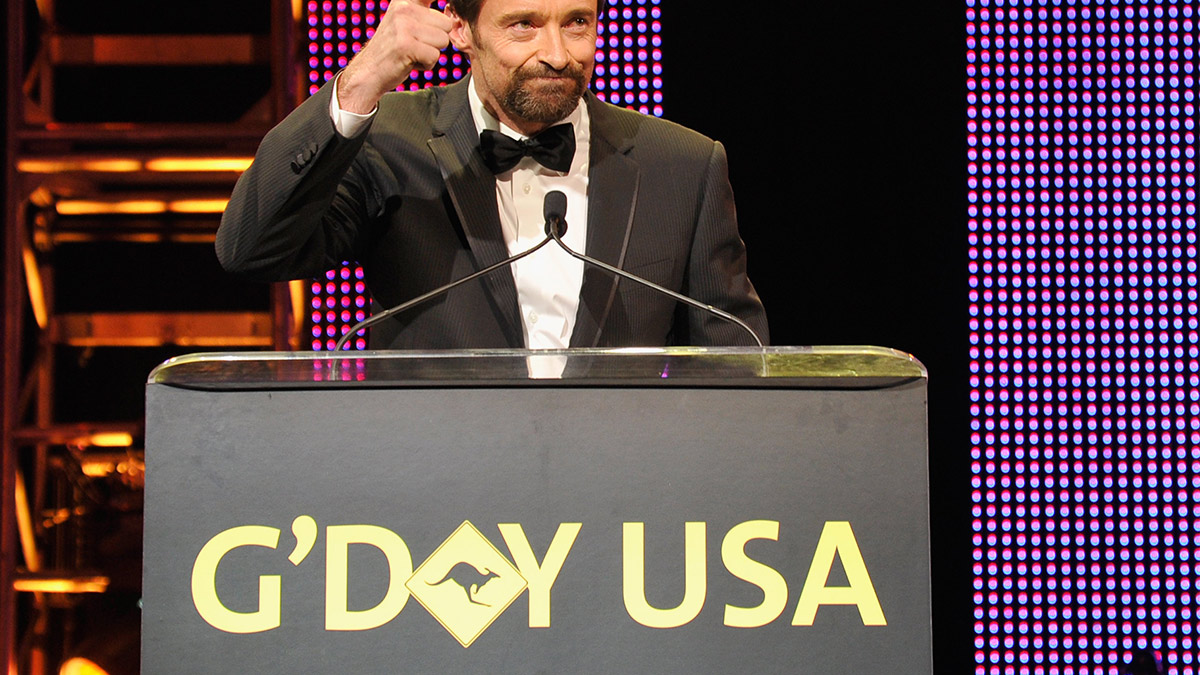The ASX reckons the tech IPO story has further to run, and the huge US market is set to play a role

Aussie actor Hugh Jackman presents at the G'day USA black tie event. Pic: Getty Images
Historically, the ASX has generally been associated with some pretty traditional investment themes.
Steady growth, healthy dividends and favourable franking credits, with the big end of town weighted towards banks and mining stocks.
But over the last five years or so a notable tech thematic has emerged, highlighted by success stories such as Xero, Wisetech Global, Appen and Afterpay.
The shift has been accompanied by growth in the surrounding ecosystem, with corporate advisors and institutional investors increasingly well-versed in tech business models.
For Max Cunningham, Executive General Manager of Listings on the ASX, it leaves the domestic market with plenty more room for growth in the space.
Speaking with Stockhead, Cunningham offered insights into the ASX’s near-term strategy both locally and abroad.
“I think for starters, our first and foremost goal is to be an exchange that offers a diverse range of opportunities for investors,” he said.
“And a great way to do that – which harmonises with where the world is going – is we feel we need more tech companies.”
While the ASX will always stay engaged domestically, the size of Australia’s economy means it can’t necessarily rely on a steady pipeline of investment-grade tech IPOs from the local market.
Instead, it’s keeping its options open abroad; and Cunningham highlighted that the US market has become a key strategic focus over the last 6-12 months.
It may not be the NASDAQ, but that may be a good thing
While Australia’s tech ecosystem has made significant strides since the financial crisis, the more mature US market has undergone some interesting changes of its own.
Notably, the depth and liquidity of US private capital markets means companies are staying private for longer. The most obvious example is Uber, which by the time it listed, had an implied market cap of well over $US50 billion.

That combination of factors leaves the ASX well-placed to fill a niche for US growth companies looking for access to public capital markets.
“We don’t want to be an extreme early-stage venture market, but you don’t want to be closed either; it’s about finding the right companies at the right time,” Cunningham said.
“Certainly I think there are enormous opportunities in the US, and the goal in that market is to insert ourselves into the conversation.”
Cunningham said the venture capital model in the US eventually directs capital to companies achieving 5x or 10x growth.
There are still a lot of established companies with attractive growth rates looking for capital, left with the option of onerous VC terms or a trade sale. And that’s where the ASX can play a role.
“Our observation is that if you look at the long-run total return of the ASX200, it’s around 10 per cent,” Cunningham says.
“Most of these companies coming to market are growing rates between 20 to 50 per cent, so we’re presenting the ASX as an option for those businesses to look at.”
Geographically, that’s a slightly easier conversation to have with companies based on the US west coast. But along with Silicon Valley, the ASX is also fielding pitches from Chicago and New York, where its established a network with twice-yearly visits.
As a result of that groundwork, Cunningham said there’s a steady pipeline of US tech plays preparing to list down under.
“For the 2020 financial year, we’ve got five tech companies from the US with market capitalisations of between $300m to $1bn, looking at equity raises of between $50m and $300m,” he said.
And of those, the largest company – with an estimated market cap of around $1bn – is based out of the east coast market of Boston, Massachusetts.
Right in the sweet spot
In a global context, Cunningham said the ASX has struck a nice balance as a well-regulated market catering to slightly smaller companies.
“Nobody shies away from a good regulatory environment; companies want it, and capital wants it,” Cunningham says.
“I think we’ve got the balance successful in Australia and our goal is to maintain the ASX brand as a market of quality.”
He said another important factor is that many companies abroad with market caps below the $1 billion mark are faced with the prospect of joining a secondary board (eg. London’s AIM index), which usually puts them outside the scope of institutional investors.
“I think that gives us a really strong opportunity in Australia, where if your market cap is in the $100m to $1bn range you won’t fall outside the mandate.”
“For example, to get inclusion on the ASX300, a company only needs a free-flow market cap of around $300m. That puts you within the investment mandate for a lot of mid-cap fund managers, so you can get good quality institutional investor interest at a much earlier stage.”
Add it all up, and the ASX is positioned in a “sweet spot” to attract strong businesses from mature tech markets.
“We’re getting a lot of engagement, and I think it gives us an opportunity to become the global home of mid-cap tech IPOs,” Cunningham said.
UNLOCK INSIGHTS
Discover the untold stories of emerging ASX stocks.
Daily news and expert analysis, it's free to subscribe.
By proceeding, you confirm you understand that we handle personal information in accordance with our Privacy Policy.








